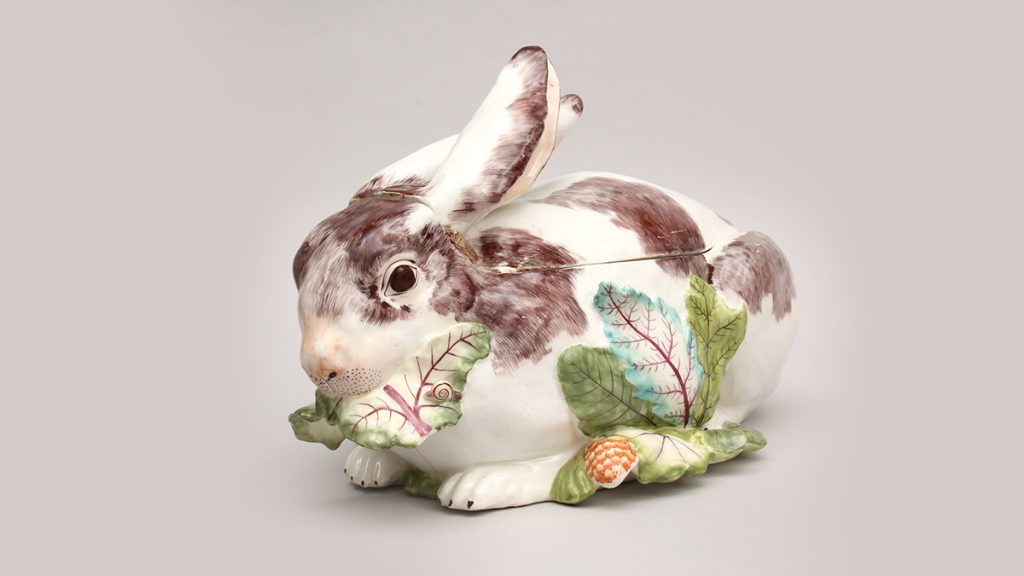European Porcelain of the 18th & Early 19th Centuries
In the late 17th century, “porcelain fever” broke out in Europe. Princes and wealthy merchants were consumed by the passion to collect and use Asian porcelain. Imported porcelain from China and Japan was expensive and was perceived as a tangible sign of prestige and taste.
It was only after many experiments that porcelain was made in Europe.
Two types of porcelain were made in Europe: high-fired “hard paste” porcelain, first made in China and later in Europe, which contained kaolin, and low-fired “soft-paste” porcelain which did not. All porcelain is white, translucent, and resonant; hard-paste porcelain and some varieties of soft-paste can withstand the thermal shock of boiling liquids.
In the 1680s, experiments led to the first commercially viable manufactory of soft-paste porcelain in Europe at Saint-Cloud, outside Paris. It was only after extensive experiments in Saxony by an alchemist, Johann Friedrich Böttger, and a physicist, Ehrenfried Walther von Tschirnhaus, that the first European hard-paste porcelain was made, resulting in the founding of the Meissen porcelain manufactory in 1710.
Soft-paste porcelain manufactories were established in France, England, Italy, and Spain in the mid-18th century, but eventually the technology of hard-paste porcelain spread and became dominant in continental Europe.
Explore European Porcelain
1. Rabbit Tureen (detail), England, London, Chelsea, c.1755-1756, Purchased with a gift from Dr. Walter S. Bloom and Carol Bloom Koffler in memory of their mother, Adele S. Bloom, a collector and connoisseur of English porcelain; with a grant from the Government of Canada, Ministry of Communications under the terms of the Cultural Property Export and Import Act and with the assistance of the Tecolote Foundation.
2. Wall Vase (detail), Austria, Du Paquier, c.1730, Gift of George and Helen Gardiner, G83.1.1220
3. Sunflower Dish (detail), England, London, c.1755, Gift of George and Helen Gardiner, G83.1.1108.1-2
4. Ewer and Basin (detail), France, Sèvres, c.1758, Gift of George and Helen Gardiner, G84.1.2
5. The Monkey Orchestra (detail), Germany, Dresden, Meissen, c.1753-1775, Gift of George and Helen Gardiner, G83.1.675.1-.18
6. Sugar Box with Armorial (detail), Italy, Doccia, c.1745-1750, Gift of George and Helen Gardiner, G83.1.1105
7. Gardener with Watering Can (detail), Switzerland, Zurich, c.1770, The Hans Syz Collection, G96.5.421
8. Chocolate Pot (detail), Denmark, Copenhagen, c.1775, Gift of George and Helen Gardiner, G83.1.1104
9. Scowling Harlequin (detail), Germany, Meissen, c.1738-40, Gift of George and Helen Gardiner, G83.1.907
10. Teapot (detail), Germany, Meissen, c.1730, decorated at Lauche, Gift of George and Helen Gardiner, G83.1.764
11. Exotic Bird (detail), England, London, St. Jame's Factory, c.1751-1754, Gift of George and Helen Gardiner, G83.1.1005

